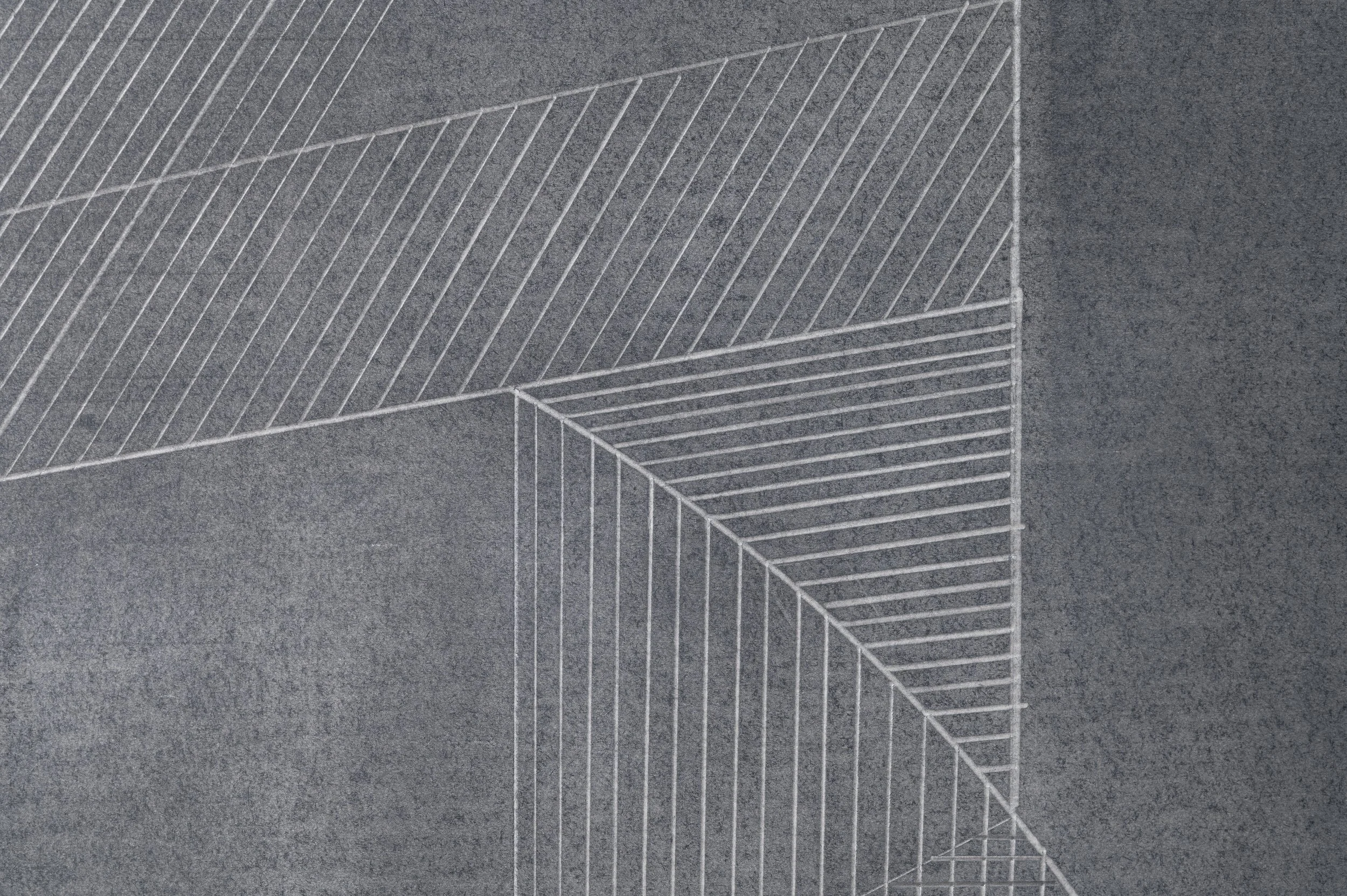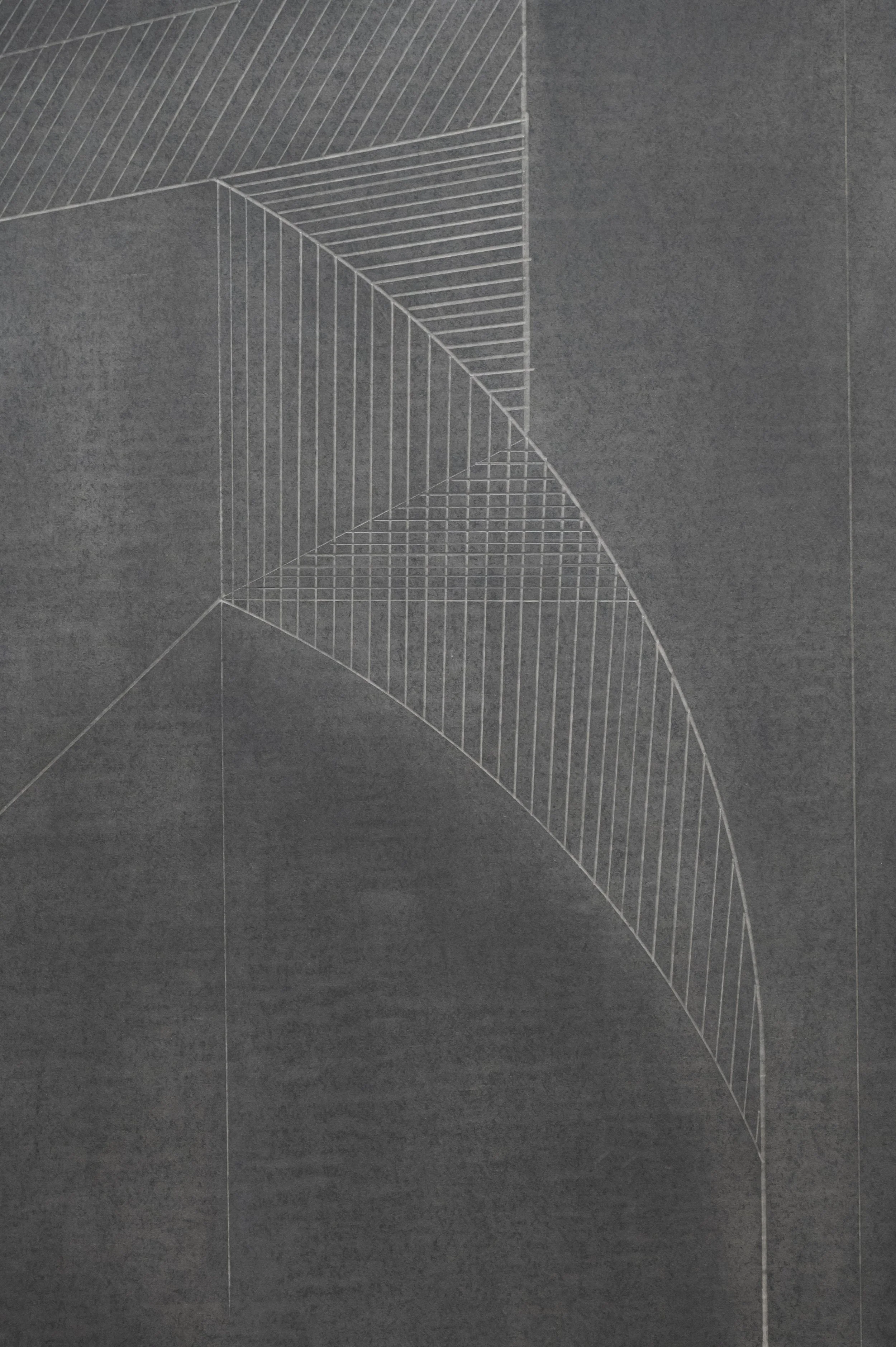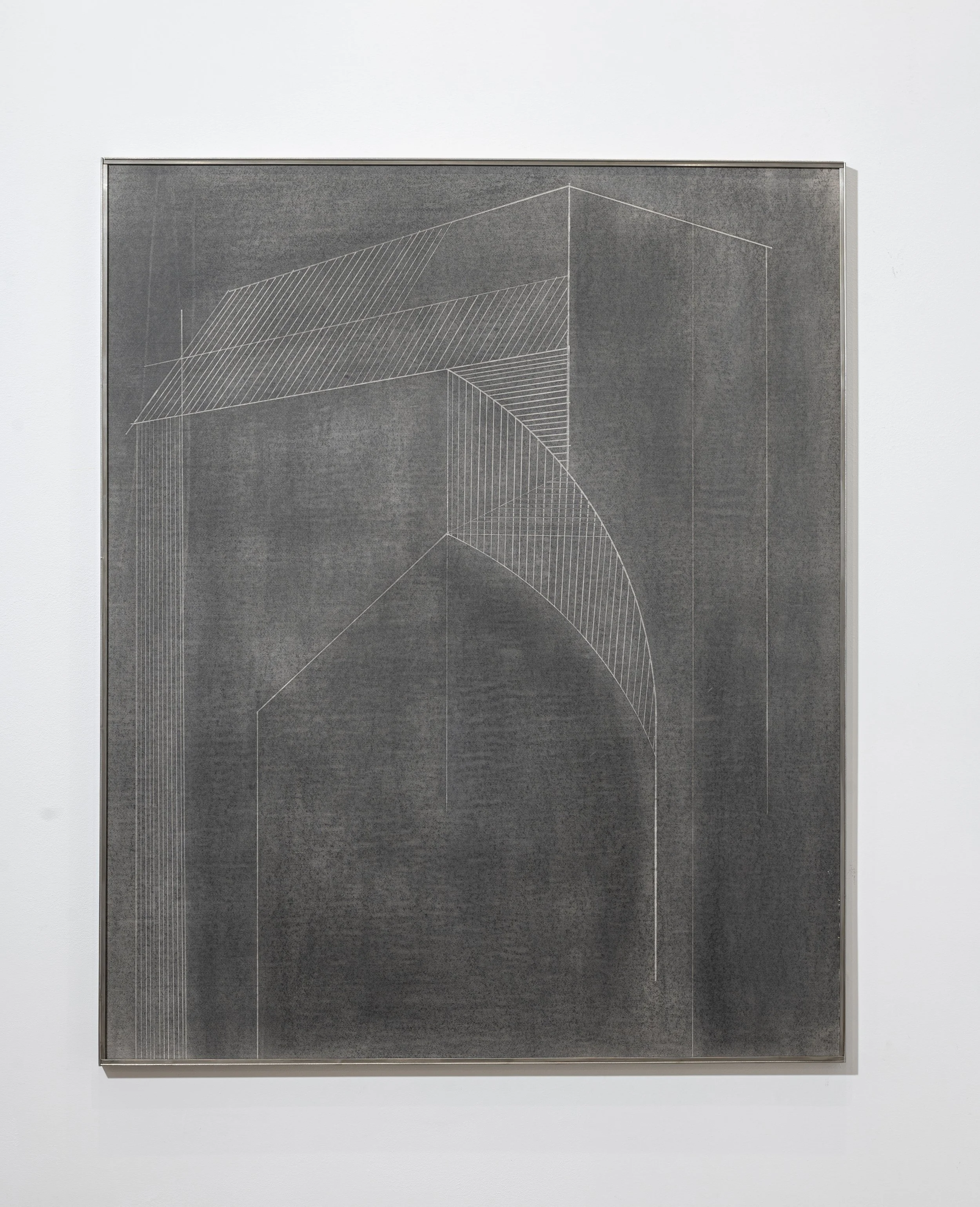Estela I
Esta serie se enmarca dentro de la exposición titulada In Scala, presentada en Vangar Galería. Su origen se sitúa en un espacio familiar que iba a desaparecer, donde realicé una acción a modo de despedida, interviniendo directamente sobre la arquitectura del lugar. Utilicé un buril para generar marcas sobre el yeso de las paredes sin lacerarlo, lo que me permitió dibujar con fluidez y reflexionar sobre la escala entendida no como medida, sino como relación entre el cuerpo y el espacio.
El yeso laminado, debido a sus características técnicas —compuesto por dos capas de celulosa que contienen entre sí una de yeso—, me permitió trasladar con fidelidad el trazo original realizado sobre las paredes. La técnica que empleo sobre la superficie se denomina esgrafiado, un procedimiento que consiste en “grabar” sobre un material para introducir posteriormente una nueva capa, en este caso de grafito, que poco a poco va revelando el dibujo que subyace en la capa inferior. Este proceso convierte cada pieza en una huella doble: la del gesto inicial y la de su reconstrucción gráfica.
Aunque no fue un punto de partida consciente, la lectura de John Berger y su referencia a los dibujos prehistóricos realizados de memoria actuó como detonante, permitiéndome reformular aquella intervención inicial y llevarla hasta esta última fase del proyecto. En este sentido, la serie funciona como un puente entre aquella acción efímera y su permanencia material, transformando un gesto íntimo en una estructura que puede ser leída, recorrida y reinterpretada por el espectador.
This series is part of the exhibition entitled In Scala, presented at Vangar Galería. Its origin lies in a familiar space that was about to disappear, where I carried out an action as a farewell, intervening directly on the architecture of the place. I used a burin to make marks on the plaster of the walls without damaging it, which allowed me to draw fluidly and reflect on scale understood not as a measurement, but as a relationship between the body and space.
The laminated plaster, due to its technical characteristics—composed of two layers of cellulose containing a layer of plaster between them—allowed me to faithfully transfer the original lines made on the walls. The technique I use on the surface is called sgraffito, a procedure that consists of “engraving” on a material and then introducing a new layer, in this case graphite, which gradually reveals the drawing underlying the lower layer. This process turns each piece into a double imprint: that of the initial gesture and that of its graphic reconstruction.
Although it was not a conscious starting point, reading John Berger and his reference to prehistoric drawings made from memory acted as a trigger, allowing me to reformulate that initial intervention and take it to this final phase of the project. In this sense, the series functions as a bridge between that ephemeral action and its material permanence, transforming an intimate gesture into a structure that can be read, traversed, and reinterpreted by the viewer.





